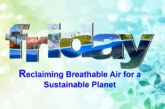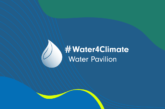International Development and IWRM Expert

Dr. Julie LADEL has completed her PhD in Applied Hydrology from Paris University and is the director of EAUDYSSEY. She has been implementing strategic international water management programmes for organizations such as UNESCO, EU/AU, African Development Bank, German and French cooperation agencies as an integrated water resources management (IWRM) expert in 40+ countries in Africa and Asia since 18+ years. She has also developed organizational/institutional development and, capacity building skills as well as worked on development effectiveness. She has organized several international events in China, Côte d’Ivoire, DRC, Senegal, Vietnam, etc. She has also gained some experience in fragile States.
- The goals and targets under SDG 6 (Clean Water and Sanitation) needs a re-visit especially amidst COVID-19 and Last Decade of Action 2030. Under your expert opinion, could you share your views?
The COVID-19 pandemic and Last Decade of Action 2030 have highlighted the fragility of our health and sanitary systems. To cope with the public health risks, it is recommended to wash our hands even more regularly than before. October 15 is Global Handwashing Day, a global advocacy day dedicated to increasing awareness and understanding about the importance of handwashing with soap as an effective and affordable way to prevent diseases and save lives. Keeping hands clean can prevent 1 in 3 diarrheal illnesses and 1 in 5 respiratory infections, such as a cold or the flu and now COVID-19. In this light, SDG6 (Clean Water and Sanitation) becomes even more relevant to protecting the lives of the population yet without access to safe drinking water, handwashing facilities and adequate sanitation.
- As we step in a post pandemic world, to augment water availability for personal hygiene, food security, lives & livelihoods, how can we opportune water as an important factor in WaSH?
Water is the core factor in Water Supply, Sanitation and Hygiene (WaSH) with soap and/or hydroalcoholic gel. For the poor segment of the societies, water and soap remain the only source of hygiene. To augment water availability, one needs to access water resources even further as they become scarce. It means, like in Rajasthan arid areas, to pump groundwater deeper and deeper for drinking water supply and irrigation and to protect traditional structures such as tankas. Usually, sanitation is not developed, and open defecation remain a common practice that should be abandoned by providing conservation devices such as dry toilets to most of the rural world population.

UN reports that water use has been increasing worldwide by about 1% per year since the 1980s, driven by a combination of population growth, socio-economic development and changing consumption patterns. Global water demand is expected to continue increasing at a similar rate until 2050, accounting for an increase of 20 to 30% above the current level of water use, mainly due to rising demand in the industrial and domestic sectors. Over 2 billion people live in countries experiencing high water stress, and about 4 billion people experience severe water scarcity during at least one month of the year. Stress levels will continue to increase as demand for water grows and the effects of climate change intensify.

- Water conservation is a complex issue that requires a multi-pronged approach with necessitated focus on demand side and supply side solutions. What is your opinion regarding this and how can ‘water security’ be strengthened catering to the demand side population?
On the demand side, 70% of worldwide water is used for irrigation demand, with 15–35% of irrigation withdrawals being unsustainable. It takes around 2,000 – 3,000 litres of water to produce enough food to satisfy one person’s daily dietary need. This is a considerable amount, when compared to that required for drinking, which is between two and five litres.
However, the world water resources remain stable at 1,386,000,000 km3 on Earth of which 97.5% are saline and 2.5% fresh. The water cycle is linking all kind of water resources “reservoirs” (surface water, groundwater, glaciers, atmosphere, biosphere, oceans) and by treating polluted surface water, exploring groundwater deeper and/or reusing wastewater in agriculture for example, we can increase the supply side.
Water security requires efforts by the population with increasing demands on water resources. Through sensitization of farmers and industries, we can drastically reduce large amount of water demands; we call this ‘demand management”. Also, domestic consumers have been made aware of the need for water conservation through many awareness campaigns on how to save water at home, and I think this has been fruitful worldwide to reduce the demand side.
- The principles of water management are of lately focusing on ‘Data sharing and Governance’ with respect to monitoring and surveillance. How do we address the problem of data in water sector?
Insufficient or scattered data is an issue in most of water management and planning endeavors. Data sharing protocols have been signed in most of the transboundary river basins to enable transboundary Commissions or Authorities to undertake their master planning. This is also the case among Indian States for shared water courses or aquifers. Also, nowadays, satellite-based products are analysed to provide some of the missing information in a geospatial format such as “water level” monitored through spatial altimetry which can be applied to rivers with a certain width (100 m or more).
- How can we uncover the dynamics of sustainable production-consumption of water use, re-use and recycle through the lens of circular economy model?
The model of circular economy offers a virtuous system that promotes the sustainable production-consumption of natural resources including water from its use, re-use to recycling. The reality is that we have less and less potable, fresh water on earth every day, and yet water is critical to the way businesses, governments, and human beings operate. If water use continues down this path, by 2030 demand for freshwater will exceed viable resources by 40%. Ellen MacArthur Foundation has published a White Paper on Water and Circular Economy in which the authors have drawn the relationship between three principles of Circular Economy and their related water systems management (see Table below).
Table 1. Relationship between Circular Economy Principles and Water Systems Management




